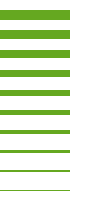https://doi.io-warnemuende.de/10.12754/msr-2016-0100
doi:10.12754/msr-2016-0100
© Author(s) 2016. This work is distributed
under

Dieses Werk ist lizenziert unter einer Creative Commons Namensnennung - Nicht kommerziell - Keine Bearbeitungen 4.0 International Lizenz.
Hypoxic and anoxic regions in the Baltic Sea, 1969 - 2015
Abstract. The Baltic Sea is a complex ecosystem characterized by a strongly fluctuating, fragile balance between high freshwater runoff and saline water inflows, a stable stratification and a topography composed of connected basins. The sensitivity of the system “Baltic Sea” amplifies climatological fluctuations on the decadal scale. Such changes may be irrelevant in the open ocean but constitute significant indicators in the Baltic Sea. Salt and nutrients in the Baltic Sea remain present there for 20 and more years before being flushed to the Atlantic along with the freshwater export. This long residence time attenuates short-time fluctuations in environmental conditions, but highlights systematic, even small long-term anomalies. The maps in this publication allow a visual evaluation of inflow events, of the progress of oxygen-consuming processes and of the development of hydrogen sulphide distribution over longer periods of time. The currently used method is a database- and software-based, transparent and reproducible way to represent the distribution of hypoxic and anoxic water in the near-bottom layer of the Baltic Sea. The datasets of IOWTOPO and RANGS form the framework for all created maps. The oceanographic database IOWDB serves as the standard primary data source and contains harmonized, quality-controlled oxygen and hydrogen sulphide data from the regular seasonal monitoring cruises that have visited the western and central Baltic Sea since 1969. The final graphic is created in XML-based format SVG and is editable in any text editor. Furthermore SVG is a vector graphic that is editable with any software application capable of processing vector graphics.
Abstract. Die Ostsee is ein komplexes Ökosystem, welches charakterisiert wird durch ein instabiles, stark schwankendes Gleichgewicht aus Süßwassereintrag und Salzwassereinstrom, durch eine stabile Schichtung und durch eine Topographie aus miteinander verbundenen Becken. Die Empfindlichkeit des Systems „Ostsee“ verstärkt klimatologische Fluktuationen auf der Skale von Dekaden. Derartige Veränderungen sind im offenen Ozean unbedeutend, aber in der Ostsee stellen sie signifikante Indikatoren dar. Salz und Nährstoffe verbleiben in der Ostsee für 20 und mehr Jahre, ehe sie mit dem Süßwasserausstrom in den Atlantik getragen werden. Diese lange Residenzzeit glättet kurzzeitige Schwankungen in den Umweltbedingungen, aber hebt systematische Langzeit-Anomalien hervor. Die Karten, die in diesem Atlas veröffentlicht werden, erlauben eine visuelle Einschätzung von Einstromereignissen, vom Ausmaß der Sauerstoff zehrenden Prozesse und von der Entwicklung der anoxischen Gebiete über längere Zeiträume. Die derzeit angewandte Methode ist Datenbank- und Software-basiert. Sie stellt einen transparenten und reproduzierbaren Weg dar, um die Verbreitung von hypoxischen und anoxischen Gebieten im bodennahen Wasser der Ostsee grafisch anzuzeigen. Die Datensammlungen von IOWTOPO und RANGS bilden die Grundlage für alle erzeugten Karten. Die ozeanographische Datenbank IOWDB als Datengrundlage enthält harmonisierte, qualitätsgeprüfte Messdaten zu Sauerstoff und Schwefelwasserstoff von den regelmäßigen Monitoringfahrten, die seit 1969 Daten von der westlichen bis in die zentrale Ostsee erheben. Die endgültige Grafik wird im XML-basierten Format SVG generiert und kann mit jedem Texteditor bearbeitet werden. SVG ist ein vektorbasiertes Format, welches außerdem mit jedem Grafikprogramm bearbeitet werden kann, welches Vektorgrafiken prozessieren kann.
